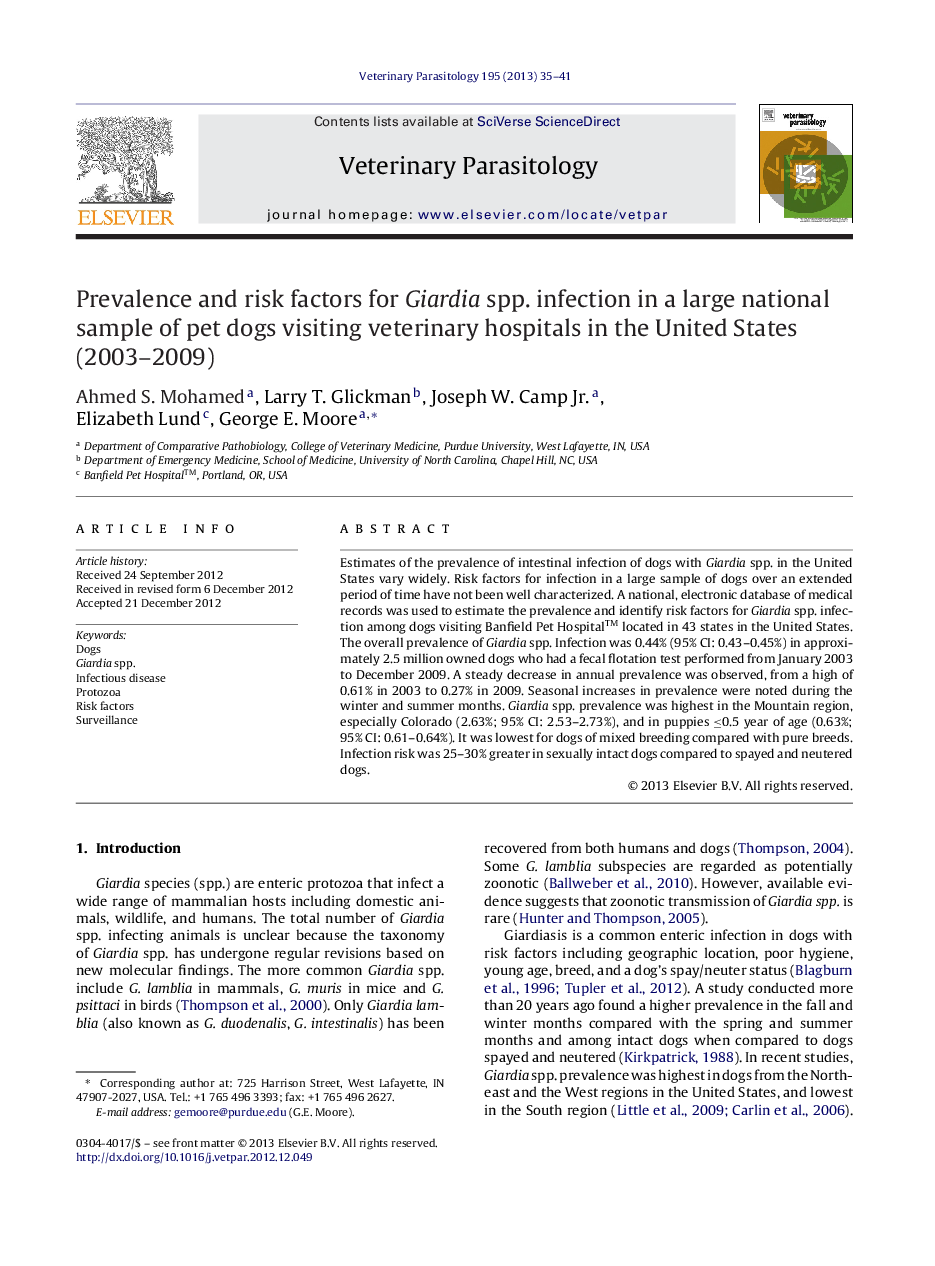| Article ID | Journal | Published Year | Pages | File Type |
|---|---|---|---|---|
| 5804091 | Veterinary Parasitology | 2013 | 7 Pages |
Estimates of the prevalence of intestinal infection of dogs with Giardia spp. in the United States vary widely. Risk factors for infection in a large sample of dogs over an extended period of time have not been well characterized. A national, electronic database of medical records was used to estimate the prevalence and identify risk factors for Giardia spp. infection among dogs visiting Banfield Pet Hospital⢠located in 43 states in the United States. The overall prevalence of Giardia spp. Infection was 0.44% (95% CI: 0.43-0.45%) in approximately 2.5 million owned dogs who had a fecal flotation test performed from January 2003 to December 2009. A steady decrease in annual prevalence was observed, from a high of 0.61% in 2003 to 0.27% in 2009. Seasonal increases in prevalence were noted during the winter and summer months. Giardia spp. prevalence was highest in the Mountain region, especially Colorado (2.63%; 95% CI: 2.53-2.73%), and in puppies â¤0.5 year of age (0.63%; 95% CI: 0.61-0.64%). It was lowest for dogs of mixed breeding compared with pure breeds. Infection risk was 25-30% greater in sexually intact dogs compared to spayed and neutered dogs.
